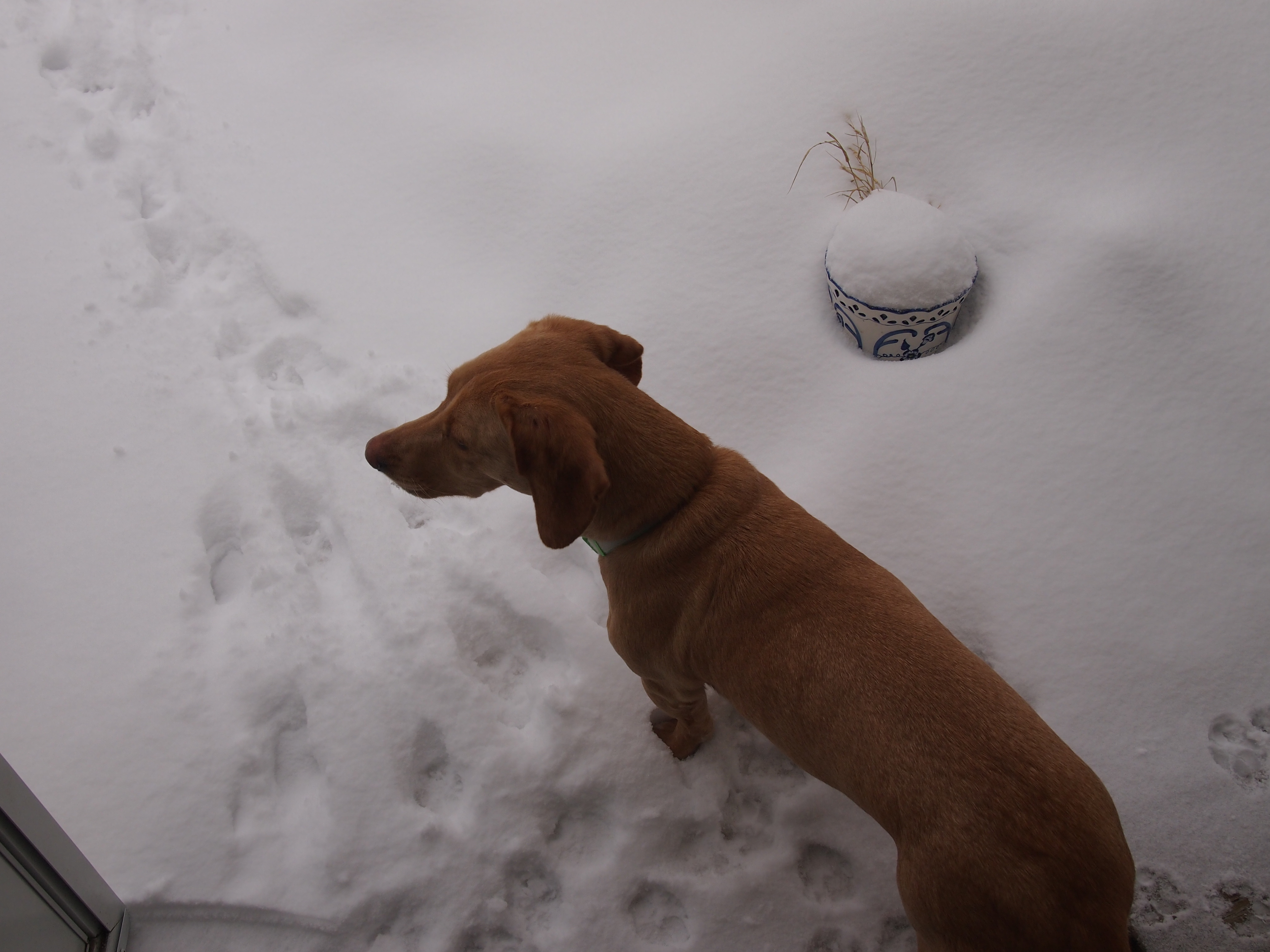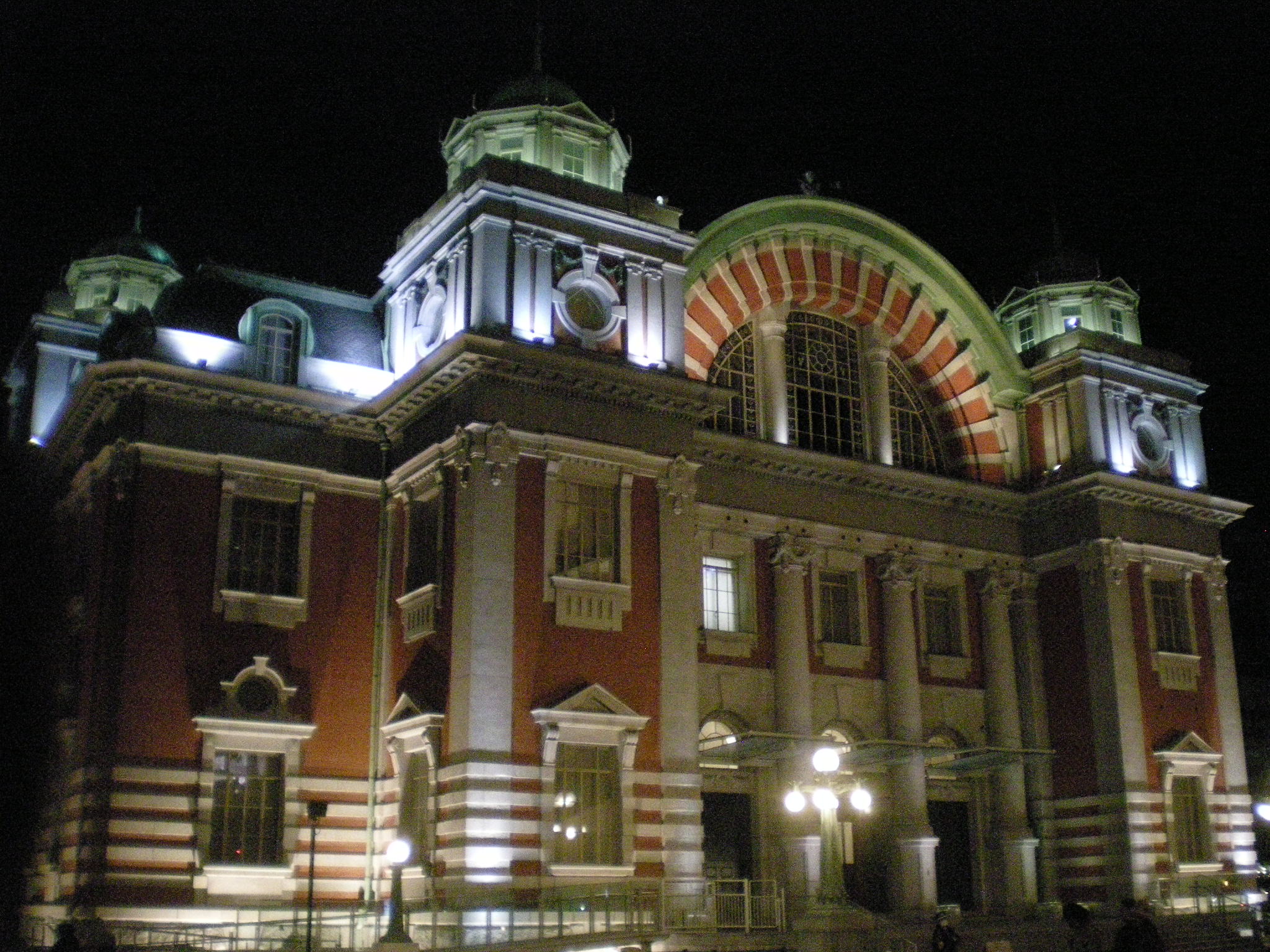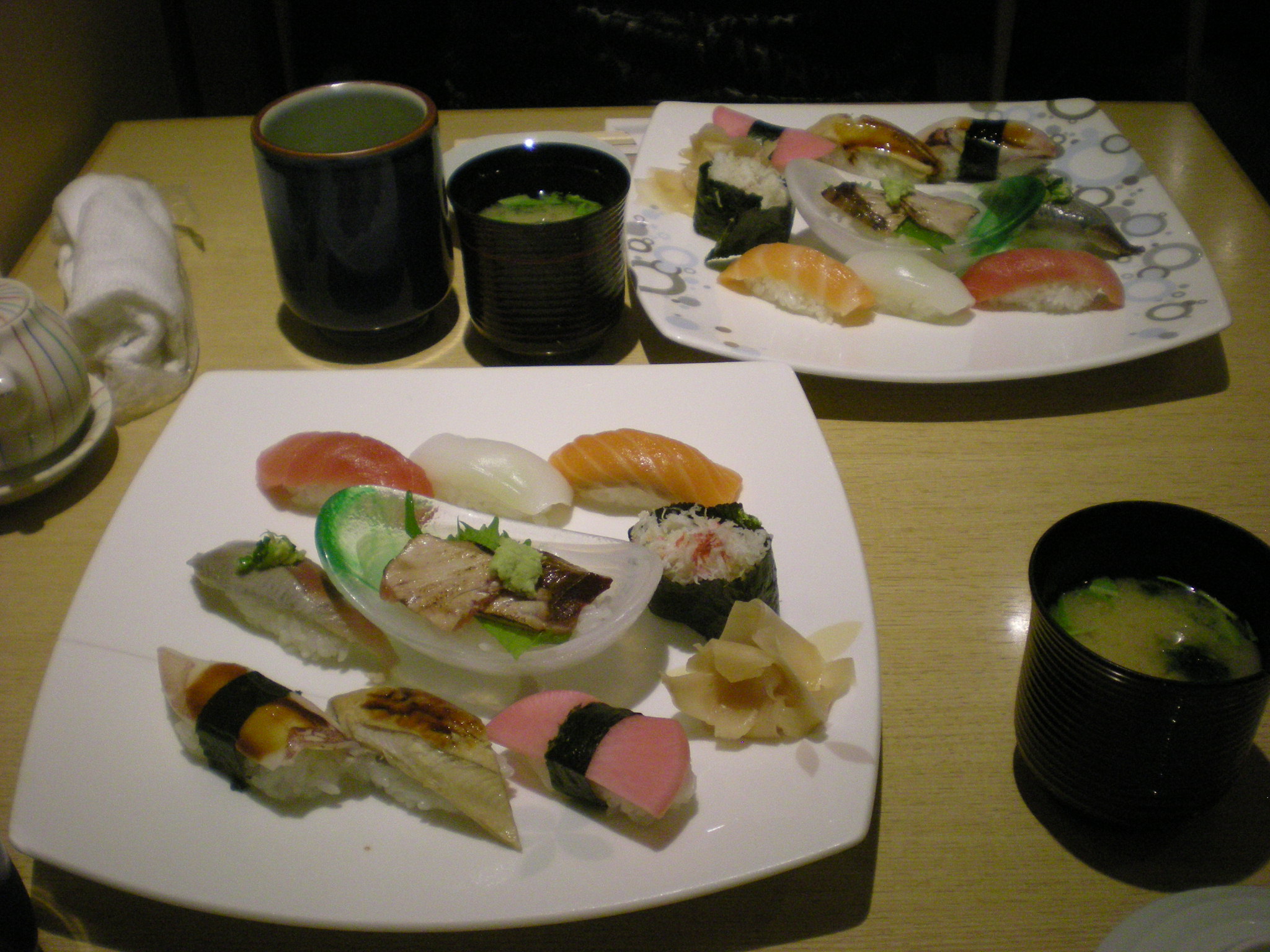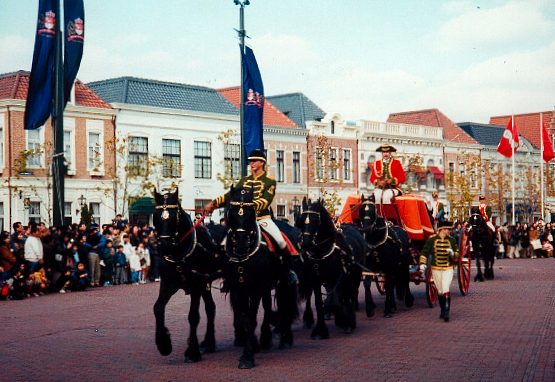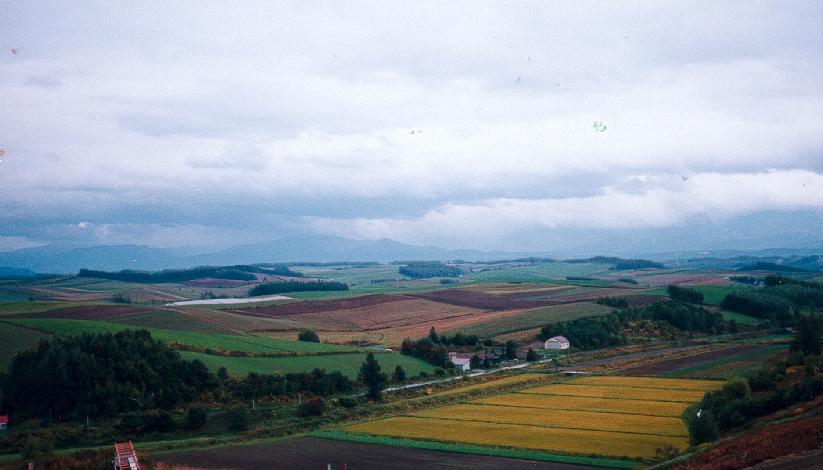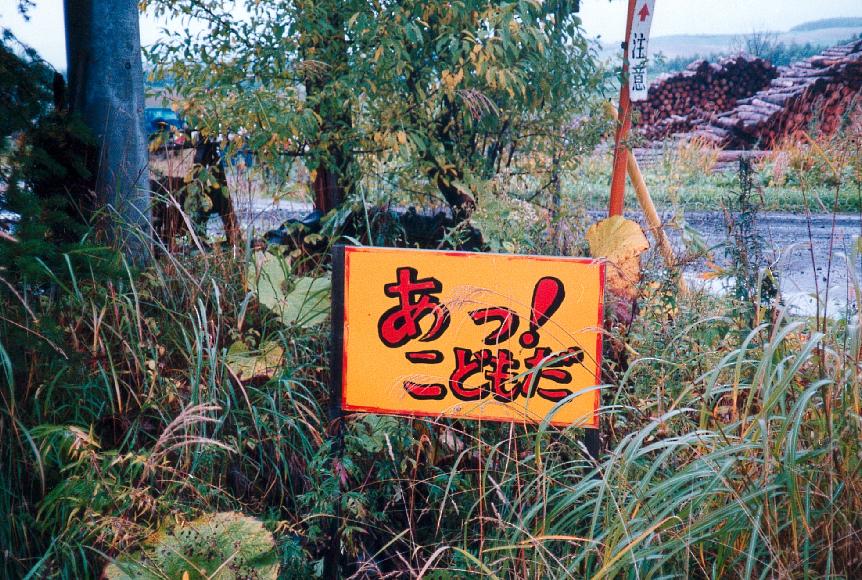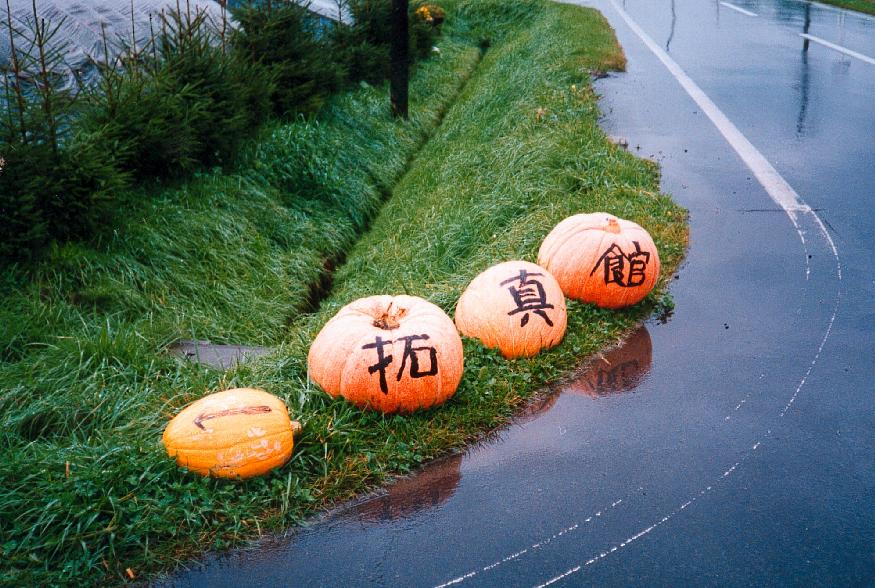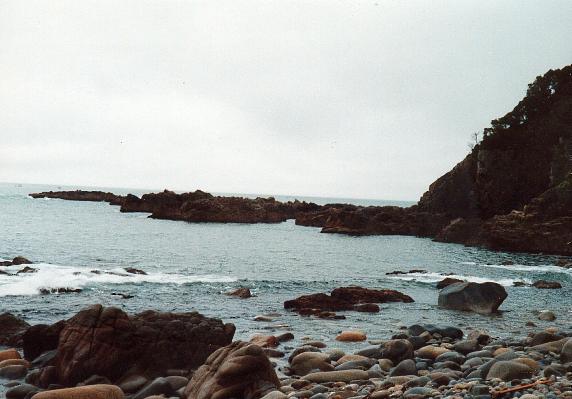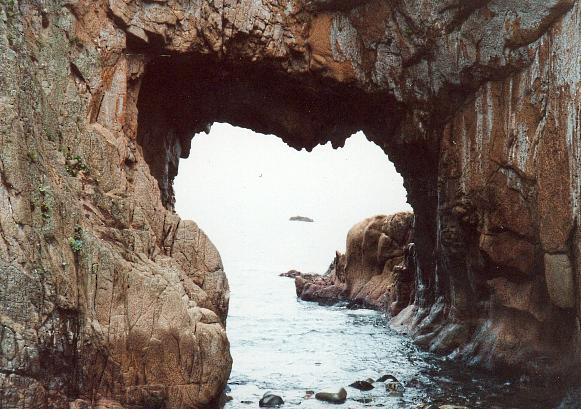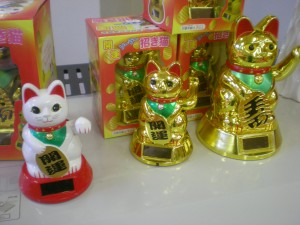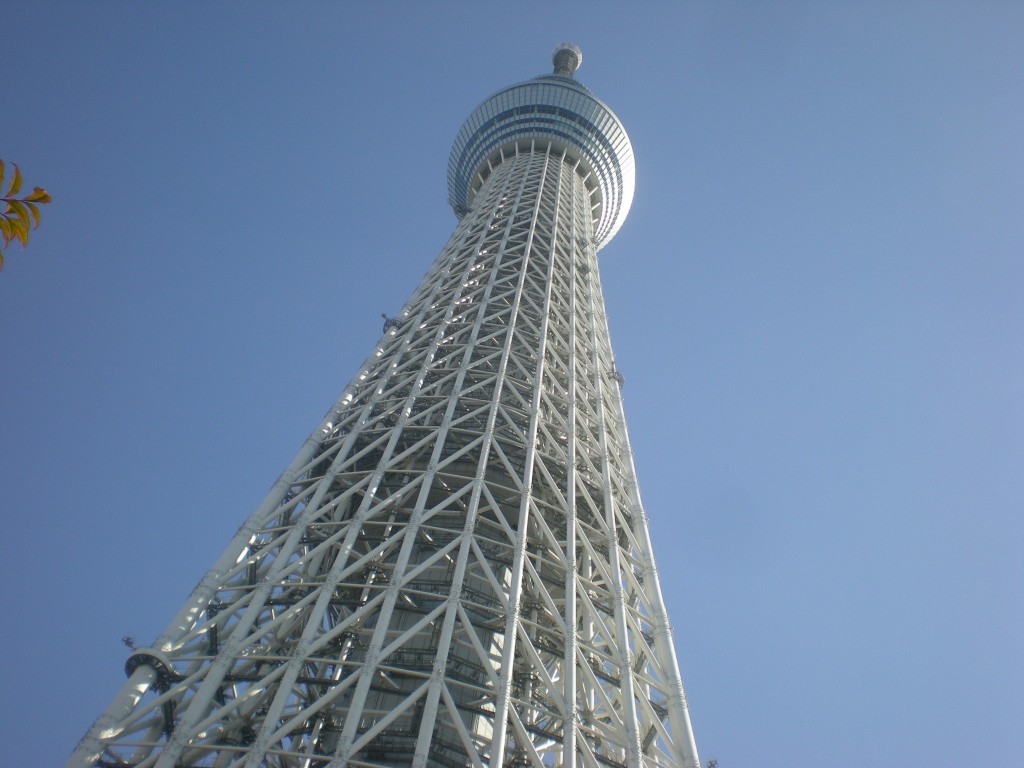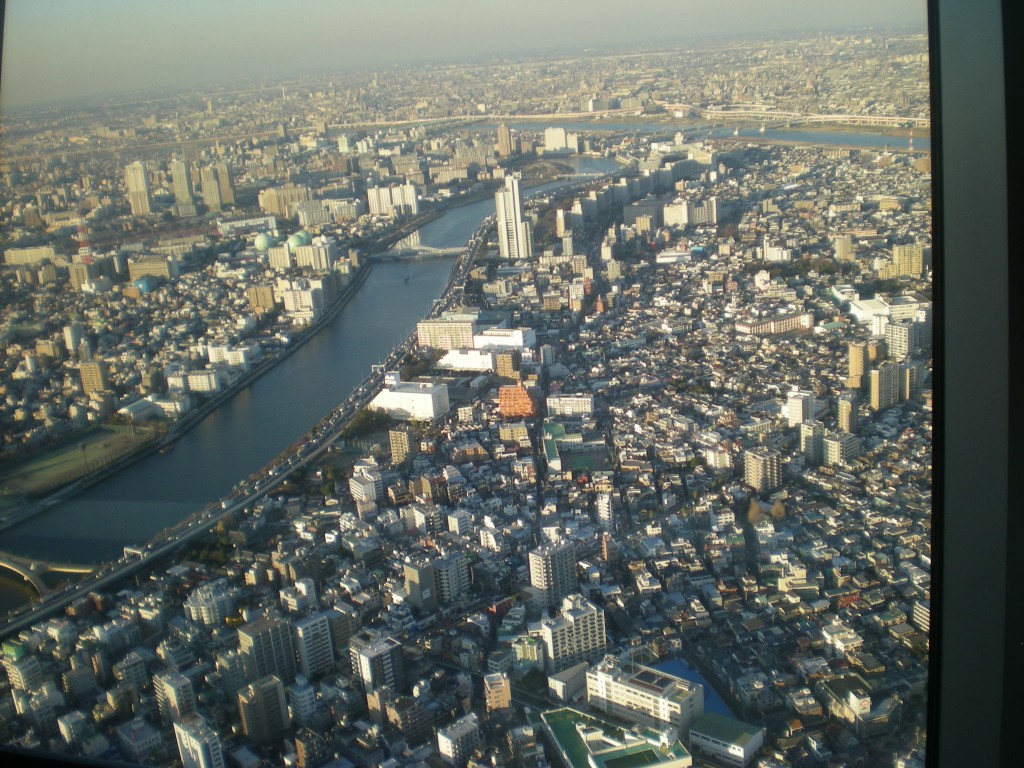Snow throughout the night and into the day today. Not a blizzard exactly, just a steady build up with some wind. Just when our driveway was more-or-less clear from previous non-blizzard buildup. But at least it’s February. The best thing about that is that it’s not January any more.
The view of the back yard around noon today. Much more snow was to come.
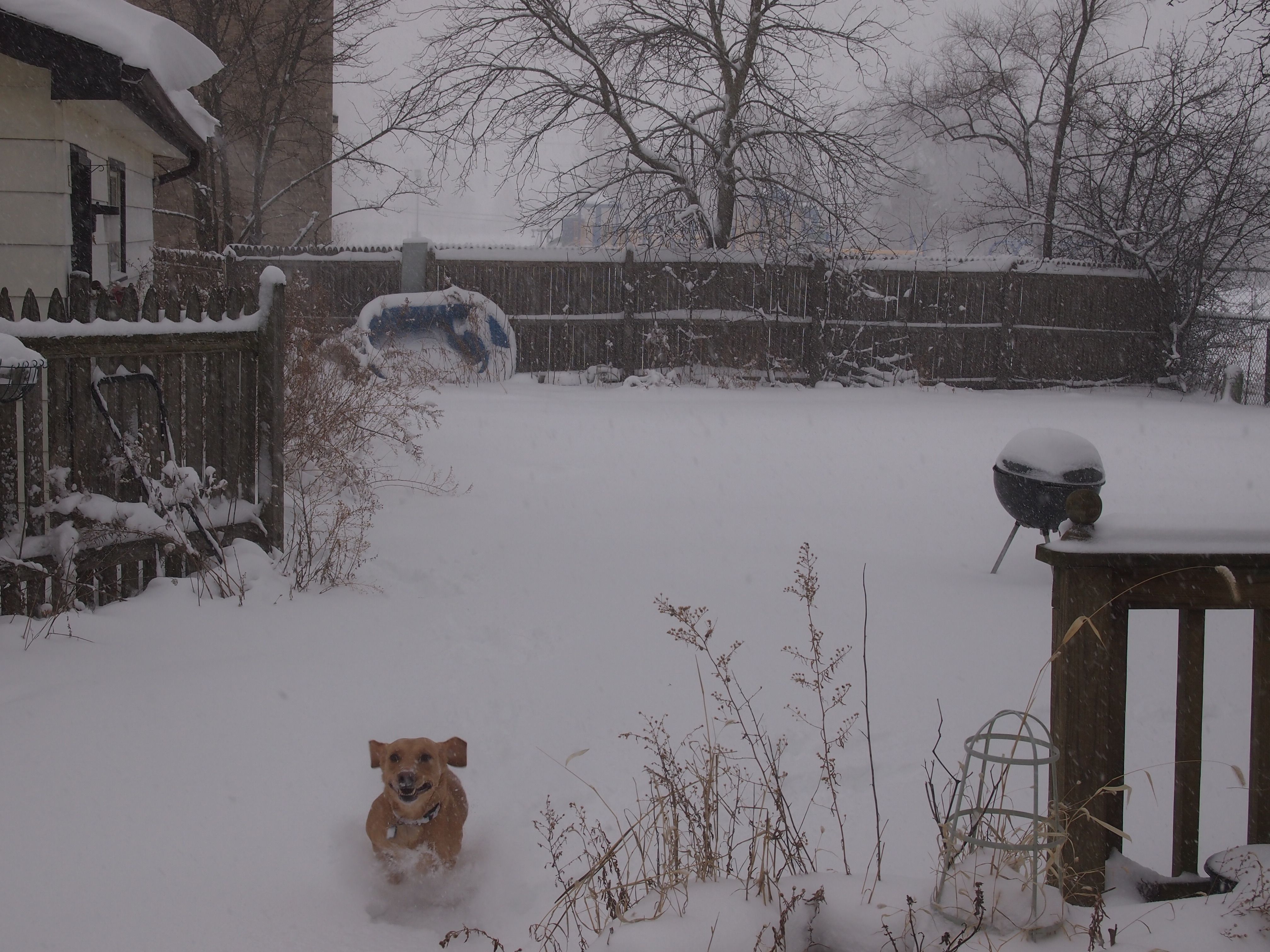 Osaka’s hot and humid much of the year, with mild winters. A gas-burning space heater was all I needed to heat my small apartment in the winter. But it did get cold. Early in 1994, Osaka got snow. Like the San Antonio snow event 21 years earlier, it was novel enough so that I took pictures.
Osaka’s hot and humid much of the year, with mild winters. A gas-burning space heater was all I needed to heat my small apartment in the winter. But it did get cold. Early in 1994, Osaka got snow. Like the San Antonio snow event 21 years earlier, it was novel enough so that I took pictures.
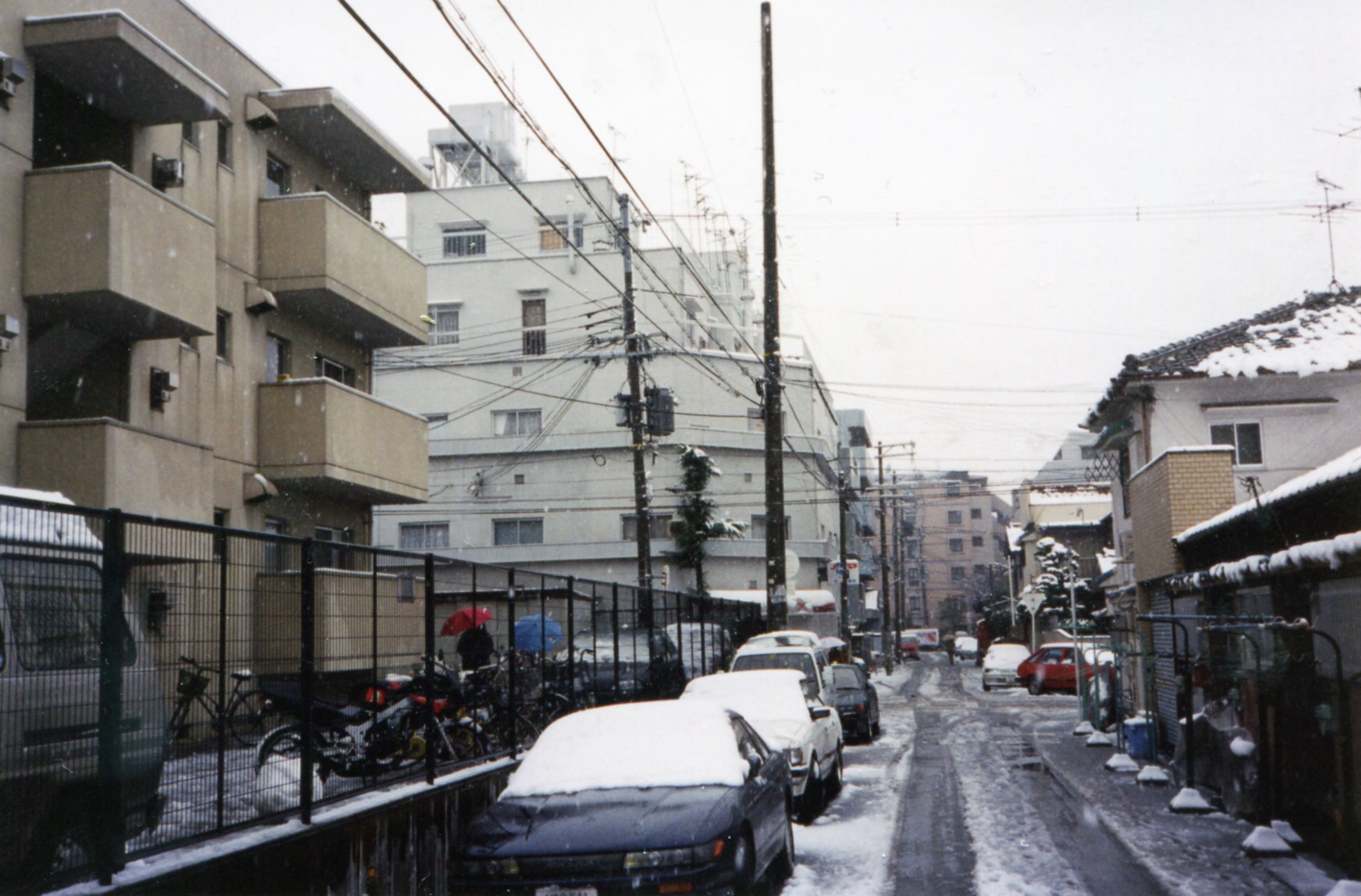 Just a coating. The white building in the background was my apartment building, known as the Sunshine Mansion. The windows of my third-story unit are mostly obscured in this shot by the twin utility poles, but I had a fairly good view.
Just a coating. The white building in the background was my apartment building, known as the Sunshine Mansion. The windows of my third-story unit are mostly obscured in this shot by the twin utility poles, but I had a fairly good view.
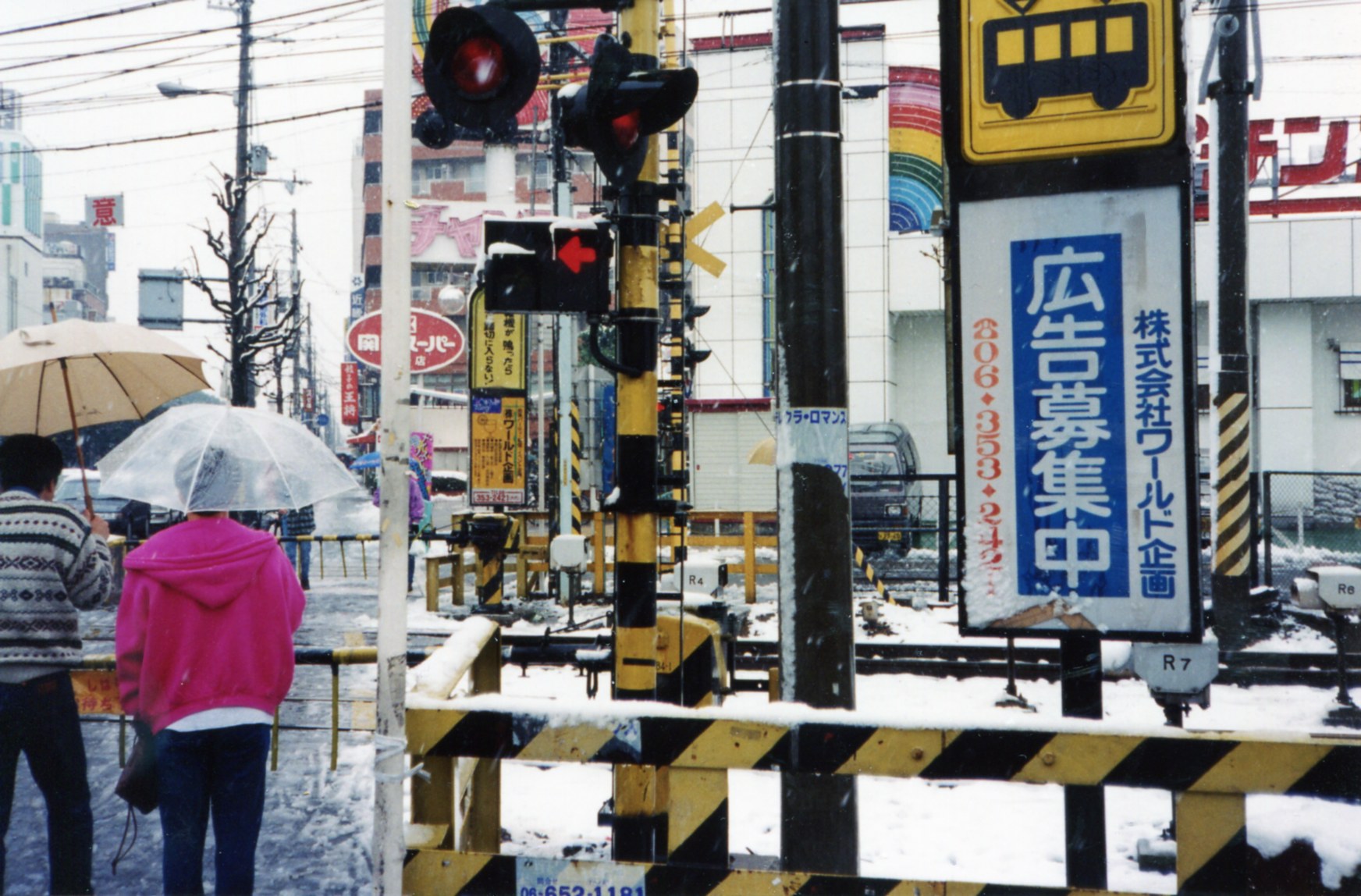 A few blocks away is the Nagai crossing of the JR Hanwa Line. The partial rainbow marks the site of a pachinko parlor. Behind that was a grocery store I went to often (pachinko, never).
A few blocks away is the Nagai crossing of the JR Hanwa Line. The partial rainbow marks the site of a pachinko parlor. Behind that was a grocery store I went to often (pachinko, never).
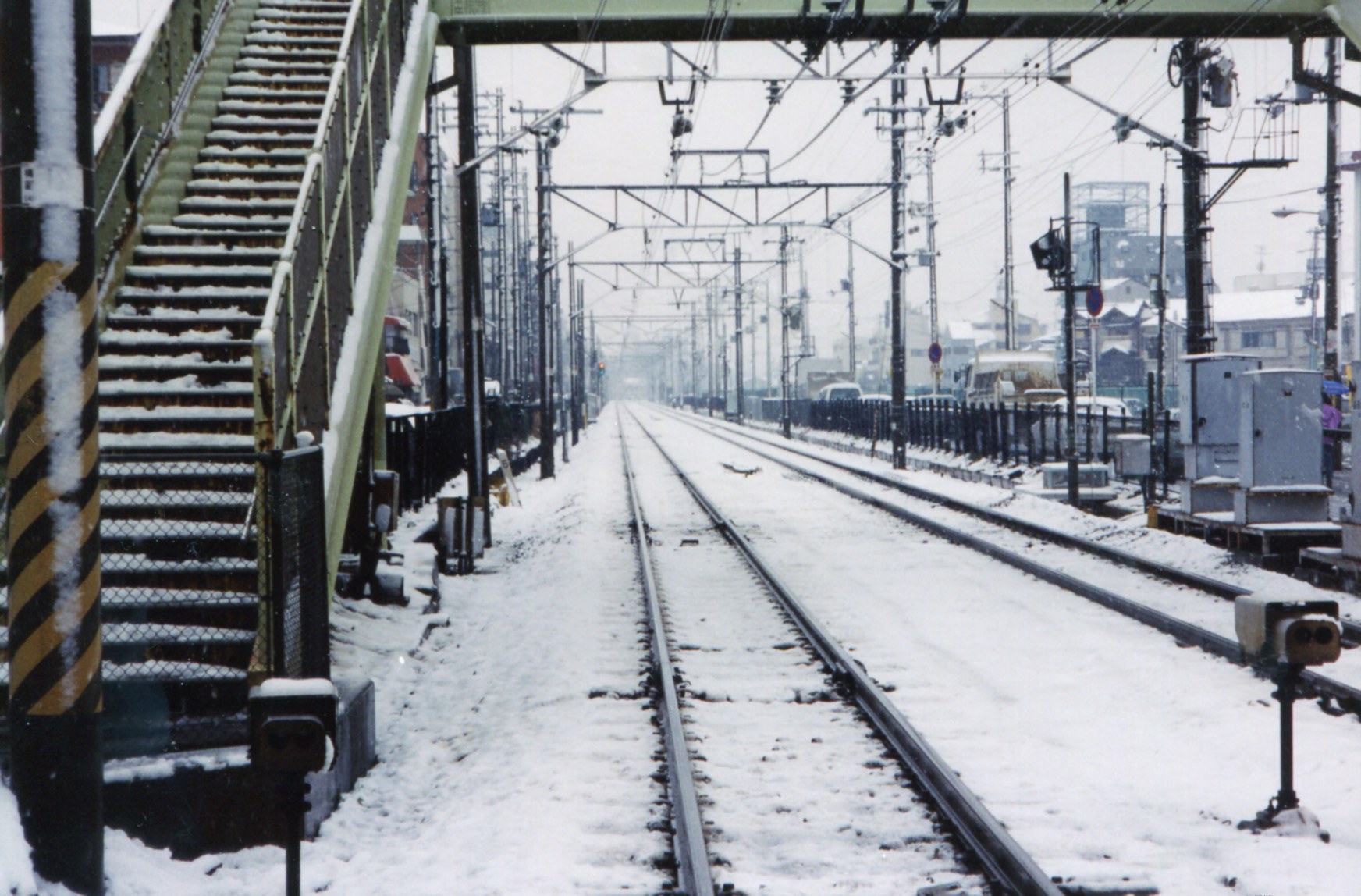 Follow those tracks far enough, and you get to Wakayama. In the other direction is the much closer Tennoji terminus, which is in the city of Osaka. But I rarely took the Hanwa line. Not far away was the Nagai station of the Midosuji Line of the Osaka subway system, which is how I usually got around.
Follow those tracks far enough, and you get to Wakayama. In the other direction is the much closer Tennoji terminus, which is in the city of Osaka. But I rarely took the Hanwa line. Not far away was the Nagai station of the Midosuji Line of the Osaka subway system, which is how I usually got around.
